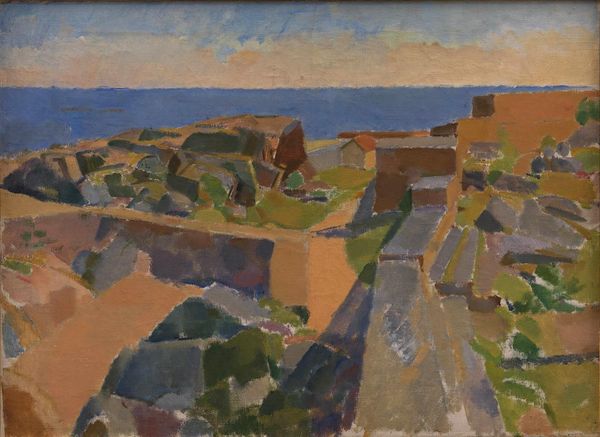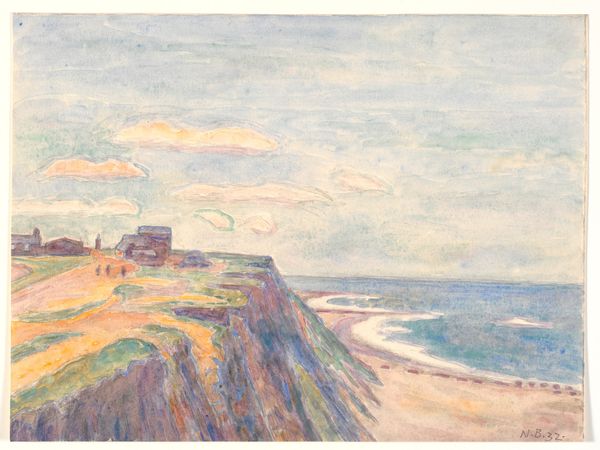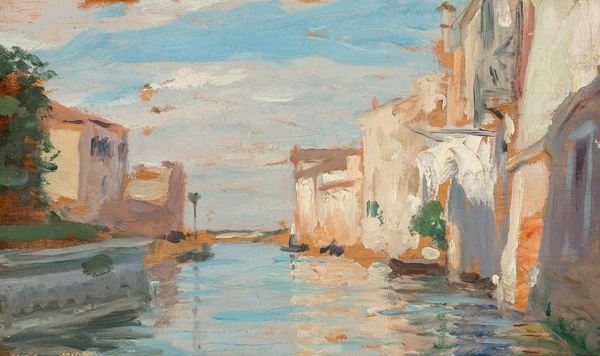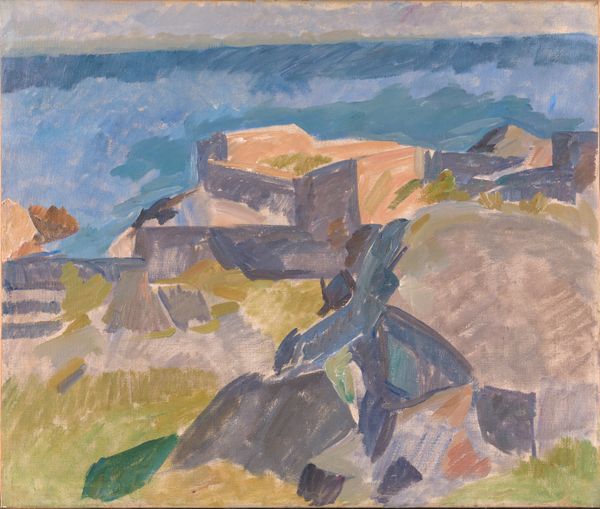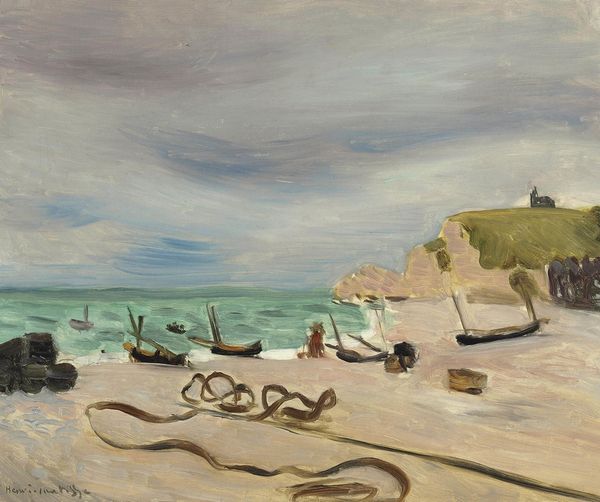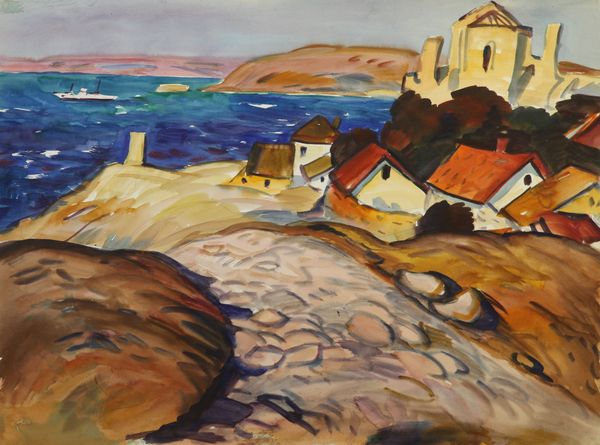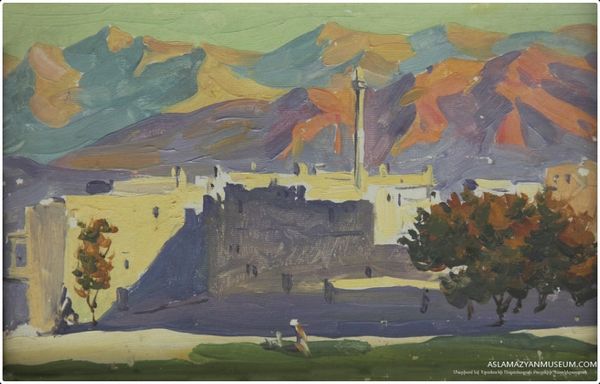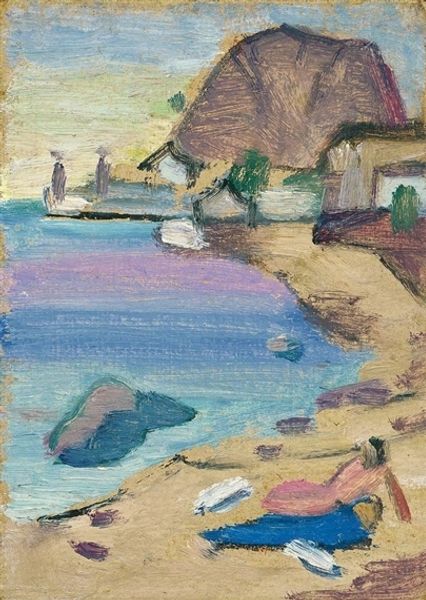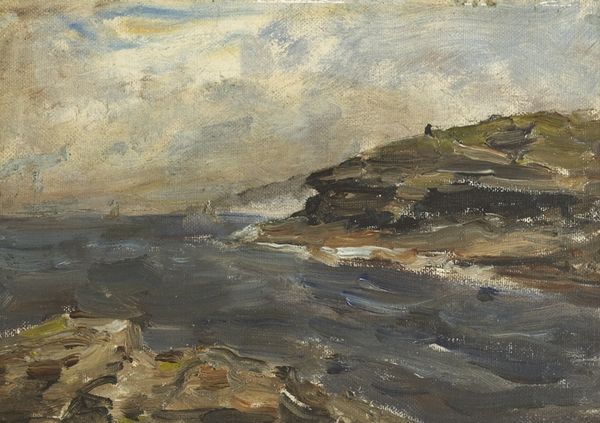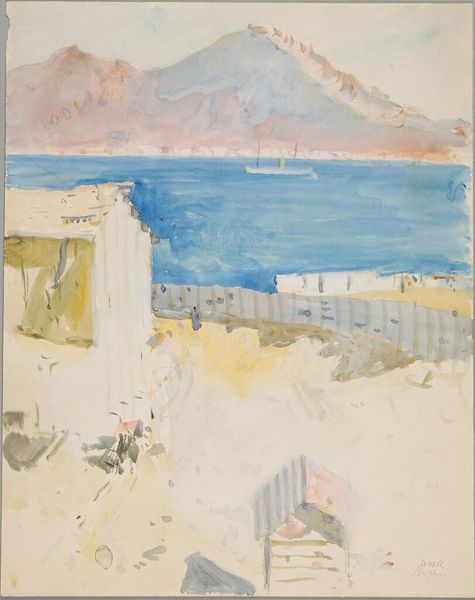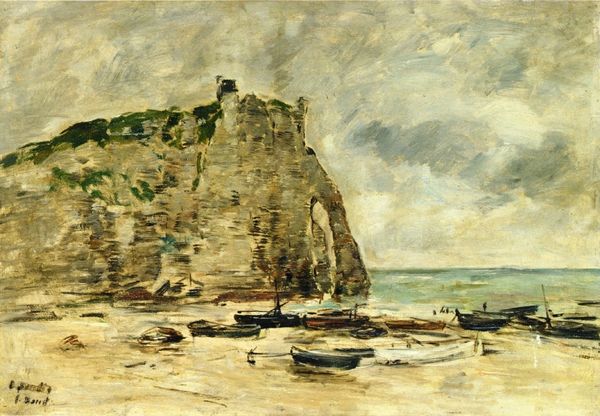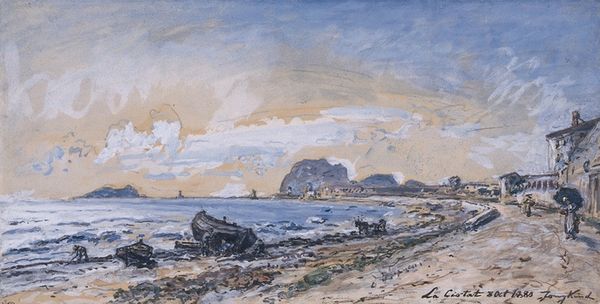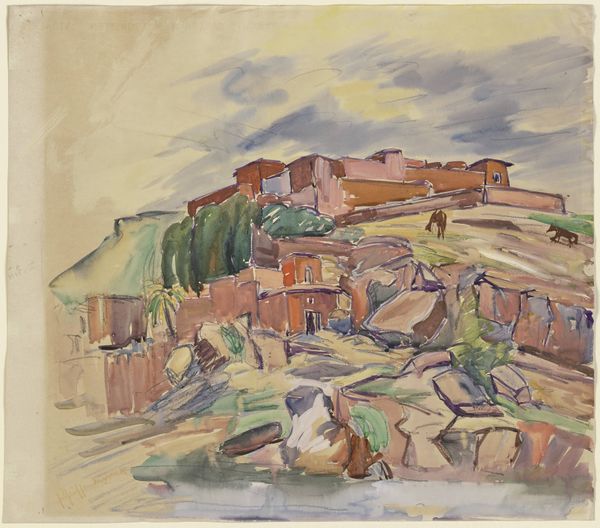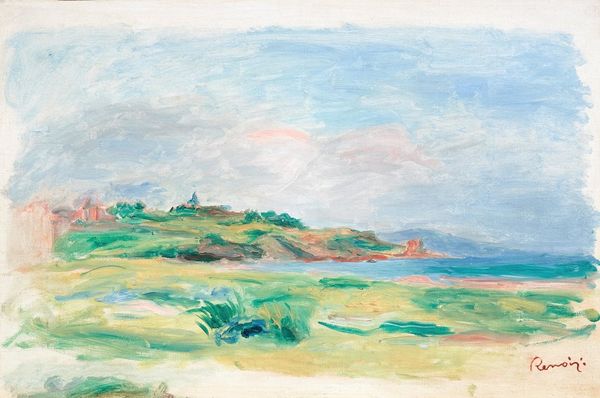
Copyright: Max Gubler,Fair Use
Curator: Ah, yes. Max Gubler’s “Lipari, Portinenti with Windmill Tower,” painted en plein air in 1925. Editor: My first thought? Muted happiness. The colors are subdued, yet the scene is peaceful, almost dreamlike. The brushstrokes feel thick, like impasto clouds forming. Curator: Exactly. Look how Gubler models the architecture and landscape. The planes are simplified, geometric almost. The composition seems driven by a careful arrangement of form. Note the solid horizontals juxtaposed with that vertical exclamation mark of the tower. Editor: You can practically feel the sun bleaching the buildings and reflecting off the water. It’s the kind of place you'd want to lose yourself for a few weeks, soaking in the quiet. And the impasto certainly emphasizes the materiality—paint itself as substance, mimicking stone and sand. But did Gubler embrace plein air to just record what he saw, or something more? Curator: It's both! He captures the scene but isn't enslaved to realistic portrayal. Instead, the subdued color palette gives the image an overall mood of tranquility. The textures certainly make it pop, but Gubler doesn’t overdo the details, inviting the viewer to reflect. He's communicating something universal through a very specific location. A synthesis, don't you think? Editor: Perhaps. There’s certainly an intentionality, even if that was subconscious. Like a snapshot, it hints at deeper emotions that Gubler wants you to grasp on your own. Curator: So true. A dance between precision and personal feeling, anchored in the place itself. The longer you spend looking, the more its beauty unfolds! Editor: Precisely. It feels like the painting offers something new each time you examine it. Thanks for pointing this piece out—another example that quiet, focused observations can be stunning!
Comments
No comments
Be the first to comment and join the conversation on the ultimate creative platform.
